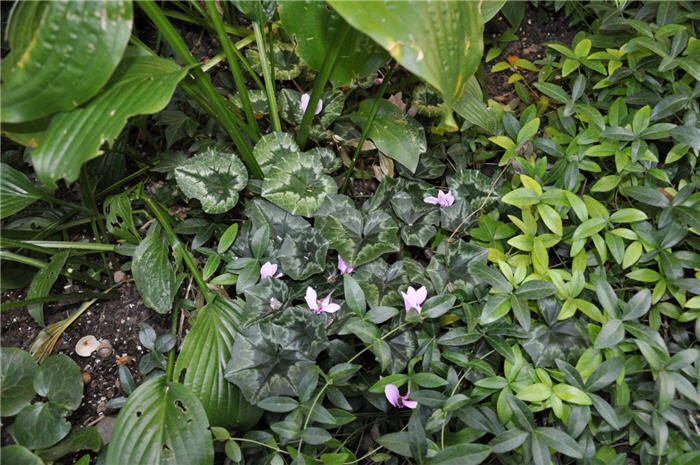| Botanical Name: Cyclamen hedenfolium | |
| Common Name: Ivy leaf Cyclamen |

-
Anatomy
-
Culture
-
Design
Plant Type
Perennial, Bulb
Height Range
Under 1'
Flower Color
Pink
Flower Season
Fall
Leaf Color
Green, Grey, Silver, White
Bark Color
n/a
Fruit Color
n/a
Fruit Season
n/a
Sun
Half, Shade
Water
Low
Growth Rate
Moderate
Soil Type
Clay, Loam
Soil Condition
Average, Rich, Well-drained, Dry
Soil pH
Adverse Factors
n/a
Design Styles
English Cottage, Formal, Woodland
Accenting Features
Fall Color
Seasonal Interest
Spring, Fall
Location Uses
Perennial Border, Shrub Border, Walkways
Special Uses
Naturalizing
Attracts Wildlife
n/a
Information by: Stephanie Duer
Photographer:
Photographer:
-
Description
-
Notes
Ivy leaf cyclamen has green and silver mottled foliage in early October, making mounds 3 inches tall and 6 to 12 inch wide. In September, just prior to the emerging foliage, the tiny pink flowers poke through the ground. By late spring, the foliage dies and goes dormant for the summer. Cyclamen are great in mass and will naturalize in woodland settings where they can be dry while dormant. Site them at the base or under the canopy of large trees or shrubs.
Grows in light shade, with maybe just a bit of morning sun. Plant in rich, well drained soil, in a place were it won't receive too much summer water. Plant corms just below the soil surface in the spring. Plants are dormant in summer; mulch in winter. Corms may rot if over-watered during the summer or planted in poorly drained soil. I've been in a few gardens on the east bench where these are thriving!